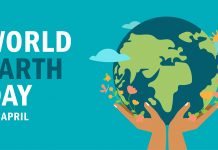Before anything resembling a downward dog, child’s pose, or flowing sun salutation happens in one of Jennifer Colletti’s Wednesday-night yoga classes, eight legging-clad women sit in a semicircle on the hardwood floor and do something unheard of in most practices: they talk.
The serene studio at Minneapolis’s OM Collective starts to sound like a group-therapy session as the women spend the first 45 minutes of the 75-minute class taking turns sharing their stories. The details vary, but certain themes repeat: failed rounds of in vitro fertilization (IVF), too-high hormone levels, multiple miscarriages, emotional breakdowns. Some of them have spent years trying, unsuccessfully, to have babies.
“I wake up thinking 10.8,” says Jolene, a long-limbed 31-year-old with a dark-blond ponytail who has been trying to get pregnant for a year. The number refers to her level of follicle-stimulating hormone (FSH).
Anything higher than a 10 can be a sign of diminished ovarian reserve, with levels above 14 causing the most concern. “I feel like I’m going crazy. That’s why I’m here. I need to be around people who are going through something similar and to learn how to find peace in this. Because I can’t let it rule my life.”
Few medical conditions are filled with as much vulnerability as infertility. Rates of depression and anxiety among women unsuccessfully trying to get pregnant rival those among patients with cancer and heart disease, says health psychologist Alice Domar, who is affiliated with Boston IVF and Harvard Medical School and is the executive director of the Domar Center for Mind/Body Health. Yet sympathy from the outside world can be scarce. “People say, ‘Relax and you’ll get pregnant,’” says Domar. “They would never say this to a cancer patient.”
Eager to try anything that might help them conceive, many women supplement endless doctor appointments with Eastern-inspired therapies, including acupuncture, massage, herbs, and yoga classes like Colletti’s. In a 2010 study of 400 couples struggling to get pregnant, about one-third added alternative and complementary methods to their infertility-treatment regimens, says Jani Jensen, a reproductive endocrinologist and fertility specialist at the Mayo Clinic in Rochester. And those rates may be growing. In a recent study in the International Journal of Gynecology & Obstetrics, more than 90 percent of women surveyed pursued
alternative treatments. Nearly three-quarters of them thought those treatments helped. The typical woman who seeks an alternative path is older than 35 and well-educated, with a relatively high income. The longer she has been unsuccessful with traditional approaches, the more likely she is to go the complementary route.
If nothing else, women appreciate an opportunity to breathe deeply during an extremely stressful time—and some research shows that learning relaxation techniques can be helpful both for coping with infertility and overcoming it. Still, the published literature on acupuncture, yoga, herbs, and other common therapies is full of mixed and inconclusive evidence. Some therapies are nearly impossible to study in a controlled way, and many oft-cited results have yet to be duplicated in follow-up studies. And because the infertility maze is so emotionally and physically exhausting, the field is fraught with fraudulent and expensive “cures.” That creates a buyer-beware situation for a group of patients that isn’t always in the best position to make clear-headed decisions. “If I told older women who have had multiple failed cycles to eat only eggplant for three days, they would do that,” Domar says. “Anything they think will help, they’ll do.”
Colletti found herself struggling to get pregnant in 2005 at age 36 after a year of marriage. Tests showed that she had endometriosis—an abnormal growth of uterine tissue outside the uterus, which can make it difficult to sustain a pregnancy. Her left ovary was the size of a lemon. Her FSH levels were too high. On top of all that, she had an underactive thyroid due to an autoimmune condition that increases risk of pregnancy loss.
Soon after absorbing the challenges she faced, Colletti ended up on what she calls “a freight train moving at rapid speed.” Within months of surgery for endometriosis in the summer of 2005, she got pregnant after her first round of IVF—only to learn six weeks later that the fetus had no heartbeat. In the spring of 2006, another round of IVF produced a twin pregnancy, but she lost one of the fetuses eight weeks later. The surviving twin, Beckett, now six, was born two weeks past his due date. Over the next few years, a third round of IVF and a naturally conceived pregnancy both ended in miscarriage.
Before trying to get pregnant, Colletti had left a high-stress job designing women’s accessories and handbags for a more fulfilling career as a yoga instructor. After getting the news of her third miscarriage, she resolved to use yoga to help women with similar stories. “I can remember driving away from finding out what had happened and saying, ‘I know I’m not the only one going through this, but I feel like it,’” she says. “‘Nobody knows how to talk about it. Nobody wants to talk about it. I feel isolated. I’m going to create a community with my yoga so other women don’t have to feel so alone.’”
In addition to her weekly classes, Colletti teaches an eight-week workshop that includes yoga, meditation, journaling, frank conversation, and educational sessions addressing nutrition, acupuncture, and other holistic approaches.
At a recent drop-in class, as the conversation finally dies down and the poses begin, Colletti instructs her students to lean back against a pile of bolsters and blankets with eyes closed, feet together, and knees dropped to the sides. They hold that position for 20 long, slow minutes while Colletti calmly encourages them to be conscious of their breath and to envision cleansing white light filling their bodies from head to toe, paying attention to the places that feel heavy and dark. Then she instructs them to envision a green, healing, fertile light filling their bellies, followed by an orange light, which represents health. The next pose is a standing forward bend with feet planted wide apart. “When your heart is open,” Colletti says, “your uterus is open.”
Even the most hopeful participants might wonder if that statement warrants some skepticism. While there are no gold-standard double-blind controlled studies of how yoga might impact pregnancy rates, restorative poses like the ones Colletti employs do facilitate relaxation, and learning to loosen up can’t hurt, experts say. In two trials of a mind/body program Domar designed to combine relaxation with cognitive-behavior therapy, she found significant drops in the psychological and physical distress associated with infertility. What’s more, pregnancy rates more than doubled for women undergoing IVF: 55 percent of patients assigned to the program took home babies, compared to 20 percent in the control group.
Even more evidence for the importance of relaxation may be forthcoming. At Mayo Clinic, Jensen and colleagues are putting together the first comprehensive study of how stress management might affect IVF patients. “Our early work suggests, and we believe the results are going to say, that women who have good stress management and are able to have positive outlooks despite going through a difficult procedure are going to have better pregnancy outcomes,” she says. “When you are really stressed, you’re releasing a lot of inflammatory markers [proteins in the blood that indicate inflammation] and also stress hormones. Maybe if we can train you to be in a state where you’re less stressed and more calm and have a better attitude, you won’t have these imbalances.”
Unfortunately, all the stress relief in the world won’t help women with the most stubborn problems get pregnant. Blocked fallopian tubes simply can’t transport eggs into the uterus. And the chance of a 45-year-old woman getting pregnant with her own eggs, Jensen says, is less than five percent. “It would be great if there was something that could fix that, but there isn’t,” she says. “Some fundamental things can’t be corrected with any alternative therapy.”
The tendency for women with the toughest cases to pursue alternative treatments most aggressively may explain why study results have been so confounding. Of 30 high-quality studies on the effects of fertility-related acupuncture—when done before and after the transfer of a fertilized embryo into the uterus during IVF, for example—about half have shown some benefit. The rest have shown none. One unpublished study even found lower rates of pregnancy among women who did acupuncture alongside IVF, though it turned out that those women had to deal with the stress of driving to another site for treatment.
In a landmark 2002 study, German researchers found that 42 percent of women who added acupuncture to their IVF regimen went on to have successful pregnancies, compared to just 26 percent of women who went without the needle-pricking procedure. Since then, not a single study has managed to replicate those dramatic results. In one of her own studies, Domar found a pregnancy success rate of just under 30 percent, whether women used acupuncture or not.
One explanation for the lack of consensus is that acupuncture is difficult to study in a controlled way. Some studies use “sham” treatments with fake needles, but many acupuncturists believe that even just pressure makes a difference. Other studies have the control group lie in a dark room, but then patients know whether they’re getting treated or not, which makes the placebo effect a potentially confounding factor. Perhaps more telling, the German study was the only one that included only women with high-quality embryos. That suggests that the women who are most likely to pursue alternative treatments may be the least likely to benefit from them. “If you’re 30 and you have 20 beautiful embryos, you’re not going to use acupuncture,” Domar says. “If you’re 40 and you have two or three embryos, you’re going to do anything you can. That skews the data.”
When studies group women by the specific details that influence their infertility, results become less encouraging—at least for some. A review of research on endometriosis, for example, found no evidence that any kind of alternative treatment was helpful. A look at studies on women with polycystic ovarian syndrome nixed the idea that Chinese herbs might help. And another recent review found no sign that antioxidant supplements were helpful for any woman seeking fertility help.
If something sounds too good to be true, Domar cautions, it probably is. That includes extreme diets, expensive supplements, guarantees of pregnancy for a lot of cash, or anything that promises to lower FSH levels. For most women, there is no need to go gluten-free or vegan. Still, if something feels good, helps women cope, and is affordable, it might be a worthwhile avenue to pursue during a difficult time.
“In my work and life, it feels for the most part like there are things I can control,” says Krista Hensel, a vice president of sales strategy at United Healthcare, who had four miscarriages before attending Colletti’s eight-week workshop while undergoing fertility treatments. She gave birth to twins in February. Pregnancy “was something I couldn’t just work harder to do. It was completely out of my control. In a way, having alternative treatments feels like it gives you some of the power back—I’m doing something about this. I’m not just waiting for the next test.”
Emily Sohn writes about health and science for the Los Angeles Times, Science News, and other national publications. Her last article for Minnesota Monthly was about the paleo diet.






